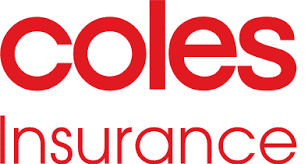Your home is your most valuable asset, which is why so many Aussies take out insurance to cover damage to their property. Shouldn’t the same apply to your valuables? That’s what contents insurance is designed for, giving you peace of mind that you can replace or be reimbursed for them if they’re lost or damaged.
Not all Australians think this way, though. The Australia Institute found in a March 2025 survey that 29% of homeowners stated that their contents were either underinsured or uninsured entirely. Before deciding to join or stay in that group, it’s worth taking the time to dig into what contents insurance can offer.
How does a contents insurance policy work?
Contents insurance is designed to offer cover for damage to or loss of your belongings within your home. This can range from electronics like televisions and gaming consoles to furniture like couches and beds, whitegoods like fridges, fixtures and fittings like toilets and showers and valuable tools in your shed.
You can also choose to add personal effects cover to your policy as an optional extra, which can extend your coverage to things like jewellery, clothing, sporting equipment, instruments, cosmetics and toys.
Cash and cheques are common contents exclusions, as are gold or silver ingots or bullion, business stock, pets and farming vehicles or equipment.
Contents cover works pretty much the same way as most other insurance policies: you’ll take out your coverage, select your sum insured (and nominate any specific items you want to cover) and pay your premiums on a weekly, fortnightly, monthly, quarterly, half-yearly or yearly basis.
Who is contents insurance suitable for?
There’s a range of situations where contents insurance is suitable. Here are just a few of them:
- You own your home and want to extend your coverage to include the valuables within it, not just the structure of the property.
- You’re a renter and need protection for your belongings, even though you don’t own the property you reside in.
- You have particularly valuable belongings that you want to insure to avoid losing thousands (or more) if they’re damaged.
What does contents insurance cover?
The exact inclusions on your contents insurance policy will come down to your insurer’s terms and conditions, but some of the most common include:
- Escape of liquid (such as a burst pipe)
- Explosion
- Fire and smoke
- Impact (such as a tree falling onto your house)
- Lightning
- Natural disasters (such as bushfires, earthquakes, tsunamis and cyclones)
- Riots or civil commotion
- Storm, flood, run-off and rainwater
- Theft, attempted theft, malicious damage or vandalism
Before you sign up for your chosen policy, be sure to check the Product Disclosure Statement (PDS) so you can find out exactly what’s covered.
What isn’t covered by contents insurance?
Once again, this depends on who you’re taking out your insurance with. The list of exclusions is likely to include at least some of the following:
- Acts of war
- Animal or pest damage
- Appliances, fittings or materials that haven’t been installed
- Cracked glass on phone, computer, smartwatch or tablet screens where this is the only damage
- Damage stemming from existing damage
- Leaving your home vacant for two to four months consecutively
- Items in use, such as sporting equipment (only applies in some cases)
- Wear and tear
How much does contents insurance cost?
The cost of your contents insurance is decided by a variety of factors, but one you may not know about is where you live. Take a look at how premium quotes differ depending on your city or town:
| City/town | Cheapest premium | Average premium | Most expensive premium |
|---|---|---|---|
| Sydney | $288 | $489 | $808 |
| Wollongong | $258 | $477 | $812 |
| Brisbane | $285 | $464 | $754 |
| Ipswich | $364 | $455 | $691 |
| Melbourne | $235 | $397 | $661 |
| Ballarat | $254 | $353 | $564 |
| Adelaide | $333 | $425 | $656 |
| Mount Barker | $241 | $356 | $604 |
| Perth | $357 | $446 | $673 |
| Margaret River | $278 | $384 | $608 |
| Darwin | $568 | $728 | $911 |
| Alice Springs | $663 | $1,120 | $1,812 |
| Canberra | $324 | $411 | $625 |
| Hall | $282 | $403 | $656 |
| Hobart | $240 | $380 | $636 |
| Burnie | $188 | $362 | $637 |
| Quotes based on a freestanding house built in 2022 and no home insurance claims in the last five years. Policy excess is $750. The wall material is double brick and the roof material is Colorbond, with an alarm system installed. Contents replacement cost is $50,000 with no nominated contents or optional extras included. Quotes obtained from Compare the Market on 4 December 2025. | |||
The cheapest places to insure your contents on average from the above list of locations are Ballarat (average premium of $353), Mount Barker ($356) and Burnie ($362). Alice Springs ($1,120) and Darwin ($728) are comfortably the most expensive, but Sydney ($489) is the next highest. Interestingly, with the exception of Alice, all regional locations we obtained quotes for were cheaper than the capital city in their state or territory.
What factors affect the cost of contents insurance premiums?
Aside from the location of your property, there’s a range of variables that play a role in determining your contents insurance premium, including:
- Contents replacement sum insured: this is the dollar figure you choose to include in your policy coverage. You can claim up to this amount for damage to your contents. The higher this sum is, the more you’ll pay. Increasing this sum to $75,000 in Sydney sees the average premium go up to $533.
- The items you’re insuring: nominating specific items you want to insure with their own claim limits will have some bearing on your policy. Adding such items to insure above the policy’s claim limits will ramp up the cost of your coverage by more than $100 on average in Sydney.
- Your home’s type and build: even though you aren’t insuring your home as part of this policy, the type of property it is and what it’s made of will impact its cost. They’ll still want to know whether it’s a freestanding home or strata-titled property, as well as the materials it was constructed from.
- Environmental factors where you live: some locations are more at risk of damage due to extreme weather events than others. If your city or town is prone to flooding and you live near a body of water, expect your premium to go up.
- Your history of home insurance claims: policyholders who have made claims in the last five years will likely have to fork out more for contents insurance. In Sydney, the average premium quote rises by over $100 to $604 if you’ve made at least one quote in that time.
- Whether your home is your primary residence: insuring your contents while renters are living in your investment property will attract a higher premium compared to owner-occupied properties in most cases. You’ll usually take out a landlord insurance policy in this instance, though.
- Your excess: this is what you pay out of pocket when a claim is made. The higher you set your excess, the lower your premium will be. For instance, ramping up your excess to $1,000 in Sydney results in the average premium dropping to $458.
What are some of the optional extras I should look for on my contents insurance policy?
Optional extras serve as coverage that you can include as part of your policy for an additional fee. They’re an important factor to consider when comparing quotes, as you’ll need to think about whether their inclusion in your coverage is worth the extra outlay. Here are some of the most common optional extras, what they cover and why they might be useful for you:
Personal effects/portable contents cover
Personal effects cover allows you to insure items that you take with you out of the house. Ordinary contents insurance covers damage to your belongings in your home, but if you want to cover things like your jewellery, phone or camera when they’re out and about with you, you’ll need to add this to your policy.
Motor burnout cover
This extra adds cover for electrical items or appliances whose motors burn out (as the name suggests). You can be protected if your fridge or washing machine stops working due to an electrical surge, for instance. It’s only extending your coverage by a little bit, but that bit might be worth it for you.
Accidental damage cover
Accidents happen. That’s why accidental damage is usually available as an optional extra. This can protect you in the event of an unforeseen, unintentional incident, such as spilling red wine all over your new (and expensive) white rug or dropping your couch while moving it and breaking its leg.
Commercial storage cover
If you have some of your valuables in a commercial storage unit, regular contents cover won’t cut it for them. Insurers will allow you to add this cover to offer protection against damage to your unused furniture or family heirlooms while they sit in storage.
New for old cover vs replacement value
Replacement value, on the other hand, means you can be paid up to the value of the item at the time. If it isn’t brand-new, that means you’ll receive less than you would with new for old cover, but you’ll pay less for it as part of your coverage (new for old cover can be expensive). Take the time to consider whether new for old coverage is worth the extra spend before you add it to your policy.
It’s important to weigh up whether making a claim, paying your excess and receiving new versions of your damaged contents is worth it. Are you better off simply replacing the item yourself? Remember that making a claim resets any no-claim bonus you have, so if you’re already paying most of the cost through your excess, it might not be the best call for you in the long run.
- Polling – Home & contents insurance - The Australia Institute
- Calculators - Insurance Council of Australia









